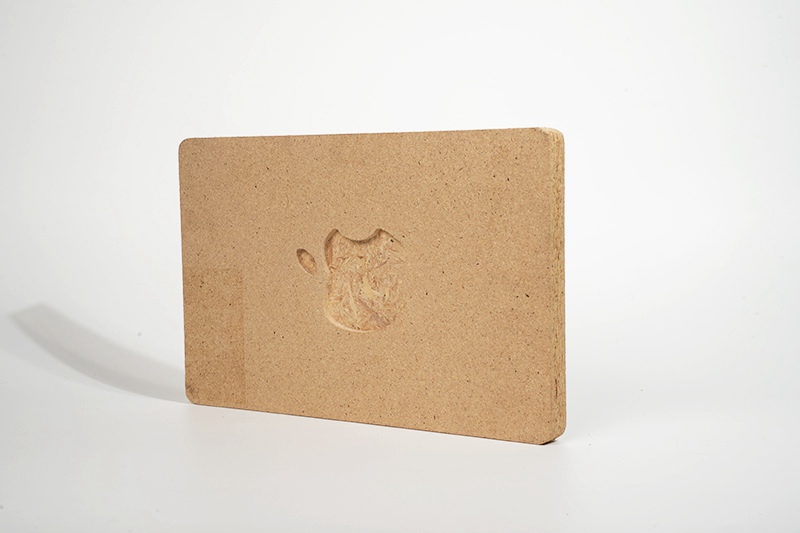How Is OSB Board Made?
OSB (oriented strand board) is an engineered wood product created through a precise layering and bonding process. It’s designed to balance the natural strength of timber with the consistency of industrial production. In this guide, we’ll look at what OSB is, how the raw materials are chosen, the full manufacturing process, and how its performance enables specialized applications in modern construction and design.

1. What OSB Board Is
OSB is made from long, thin wood strands that are arranged in alternating directions and bonded with waterproof resin under heat and pressure. This multi-layer structure gives the board its mechanical integrity and resistance to deformation.
Unlike plywood, which uses continuous veneers, OSB relies on smaller, cross-oriented wood fragments — allowing full use of fast-growing trees with minimal waste. It’s this combination of engineered precision and natural fiber strength that makes OSB ideal for high-load, stable, and sustainable building solutions.
2. Material Selection and Composition
a) Wood Fibers
Manufacturers select fast-growing and easily renewable species such as aspen, poplar, pine, and spruce. Each provides a slightly different density and flexibility. Aspen ensures light weight and stability, while pine contributes toughness and natural resin content.
b) Adhesives and Additives
The strands are coated with MDI (methylene diphenyl diisocyanate) or phenol-formaldehyde resin. These adhesives are heat-activated to create strong molecular bonds. Small amounts of paraffin wax are also added to improve moisture resistance and help the strands flow evenly during pressing.
c) Moisture Control
Before pressing, the moisture level of the strands is reduced to around 3–6%. This ensures the resins bond effectively and the board remains stable under changes in humidity.
Through these steps, OSB begins as raw timber and becomes a uniform, high-performance material designed for dimensional consistency.
3. Step-by-Step Manufacturing Process
Step 1: Stranding
Logs are debarked and shredded into thin flakes using precision cutting machines. The goal is to produce strands of consistent size and orientation for even strength distribution.
Step 2: Drying and Blending
The wood flakes are dried with controlled heat, then blended with resin and wax in large rotating drums to ensure every particle is evenly coated.
Step 3: Orientation and Mat Forming
The treated strands are arranged in layers:
The top and bottom layers are oriented lengthwise for bending strength.
The core layer is oriented crosswise to resist expansion and warping.
This alternating pattern is what gives OSB its structural reliability.
Step 4: Hot Pressing
The mat is pressed under high temperature (about 200°C) and pressure (3–5 MPa). This step fuses the resins and wood fibers into a dense, single panel while maintaining the layered orientation.
Step 5: Cooling and Finishing
After pressing, the panels are cooled, trimmed, and calibrated to the required thickness. Some boards undergo sanding or surface coating depending on the intended application — smooth for furniture, textured for structural use.
Every stage is carefully monitored to maintain consistency in mechanical strength and dimensional tolerance.
4. Mechanical and Structural Behavior
OSB’s cross-layered strand pattern creates a balanced distribution of stress. When subjected to bending, the outer layers resist tension and compression, while the inner core stabilizes the overall shape.
Additionally:
Its uniform density prevents weak spots found in natural wood.
The resin bonding network provides resistance against humidity and edge swelling.
The surface texture improves grip for coatings, adhesives, or wall cladding.
This engineered performance explains why OSB is used in places where both rigidity and reliability are essential.
5. Application Scenarios and Their Technical Value
a) Structural Wall and Roof Systems
In house framing, OSB is used for sheathing walls and roofs because it distributes loads evenly across large areas. When properly fastened, it strengthens the frame against wind shear and maintains flatness even under humidity changes. Its dimensional accuracy allows seamless alignment with insulation panels and waterproof membranes.
b) Flooring and Subfloor Systems
Builders use OSB as underlayment beneath vinyl, laminate, or hardwood flooring. The board’s uniform thickness eliminates surface irregularities, while its compressive strength prevents movement under heavy furniture. When edge-sealed, it resists swelling even in semi-humid interiors.
c) Furniture Manufacturing
In modern furniture design, OSB’s textured surface and neutral tone make it popular for minimalistic and industrial-style pieces. Manufacturers use it for shelving, desks, and storage cabinets where visual character and eco-friendly material sourcing are both priorities.
d) Packaging and Logistics
OSB’s lightweight yet rigid composition is ideal for crates and pallets. It absorbs less moisture than solid wood and doesn’t split easily under nails or screws, making it suitable for international transport and heavy equipment packaging.
e) Temporary and Modular Construction
In event booths, exhibition structures, and site cabins, OSB panels offer quick installation, reusability, and easy disposal. They can be cut and joined on-site without specialized tools, providing flexibility for short-term architectural setups.
6. Sustainability and Modern Manufacturing Benefits
OSB is often considered an eco-responsible product due to its efficient use of raw wood. It utilizes smaller trees and nearly every fiber of the log, reducing waste compared with plywood production.
Moreover, the adhesives used in modern OSB meet low-emission standards such as E0, E1, and CARB Phase 2, ensuring it is safe for interior environments.
Its recyclability and renewable origin make OSB a leading choice in green building systems and circular material design.
Conclusion
OSB board is made through a detailed process of strand orientation, resin bonding, and high-pressure pressing, resulting in a strong, stable, and sustainable wood composite.
By controlling every aspect — from fiber selection to layer orientation — manufacturers achieve panels that combine the precision of engineering with the natural advantages of timber.
Its performance in construction, furniture, and modular design proves that OSB is not just a substitute for wood but a material engineered for the demands of modern architecture and production.
Previous: How Much Does OSB Board Weigh?

